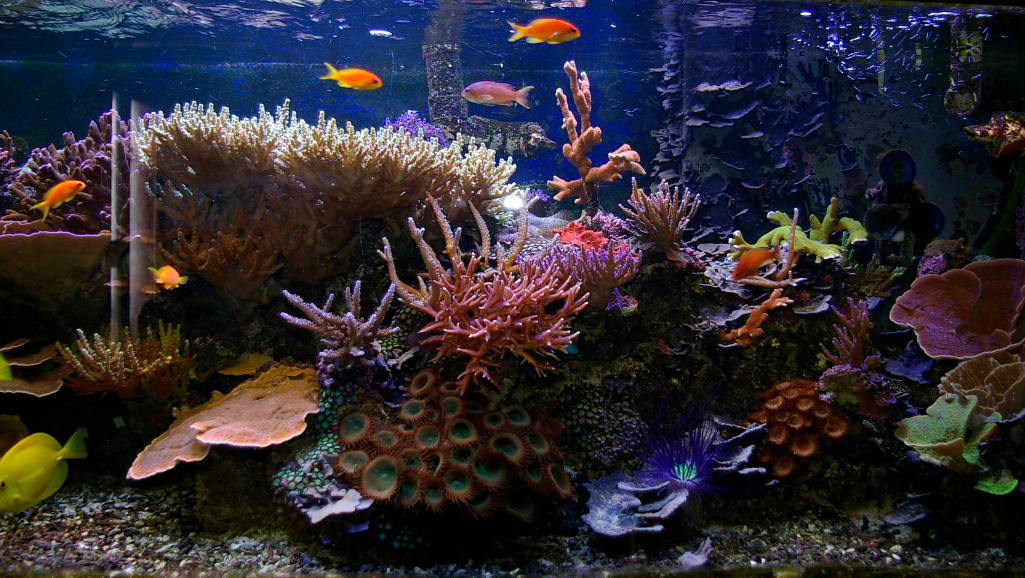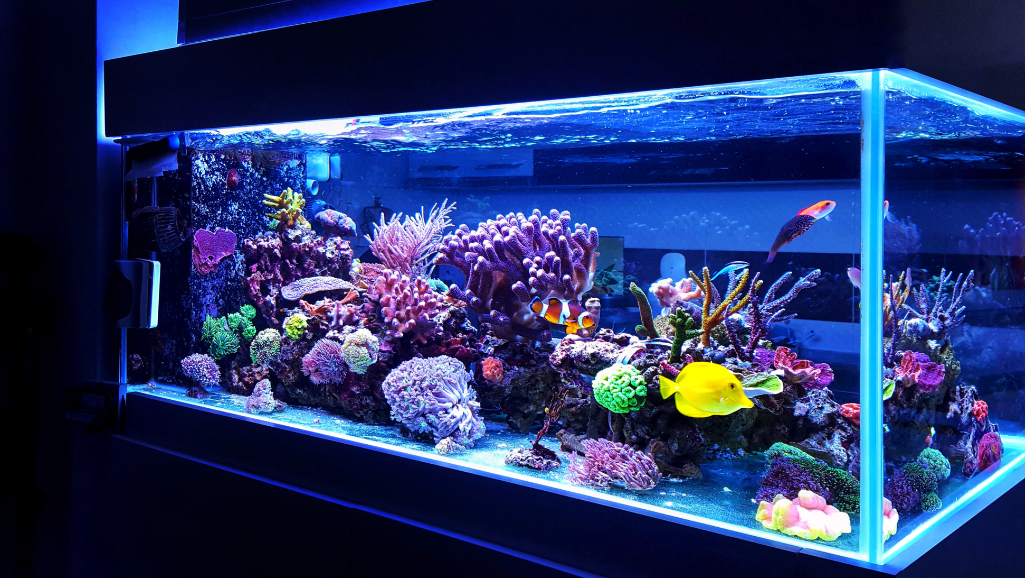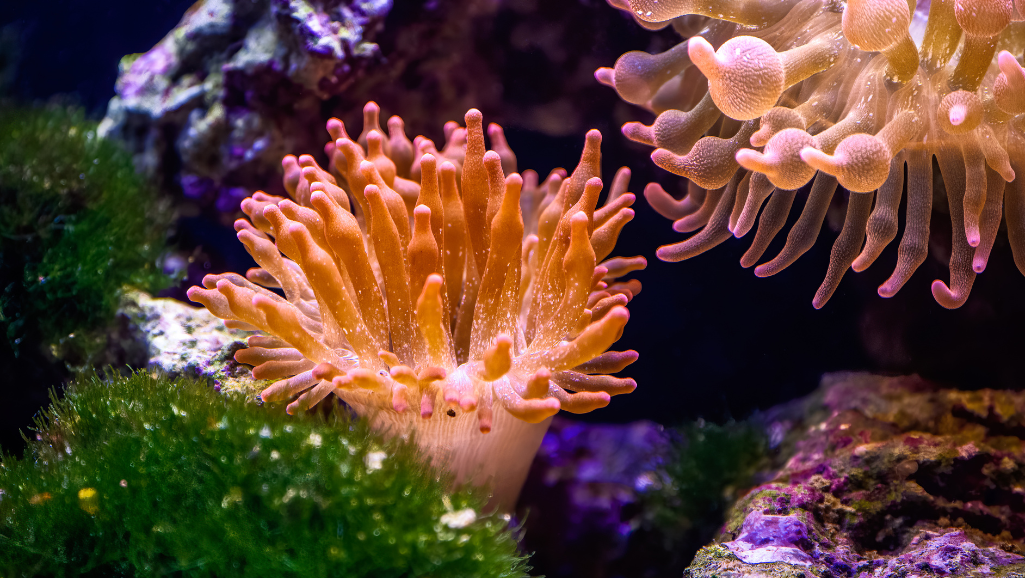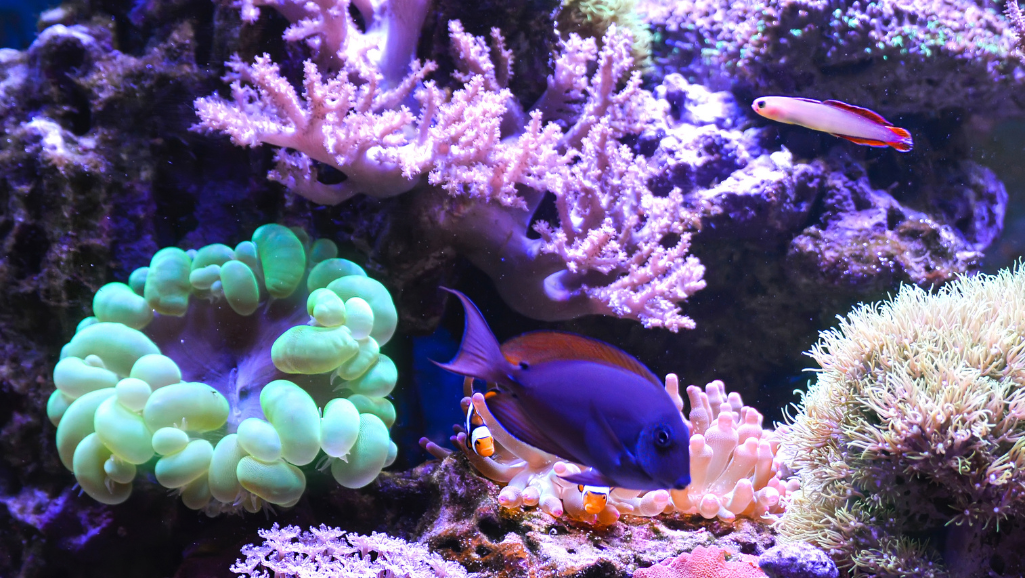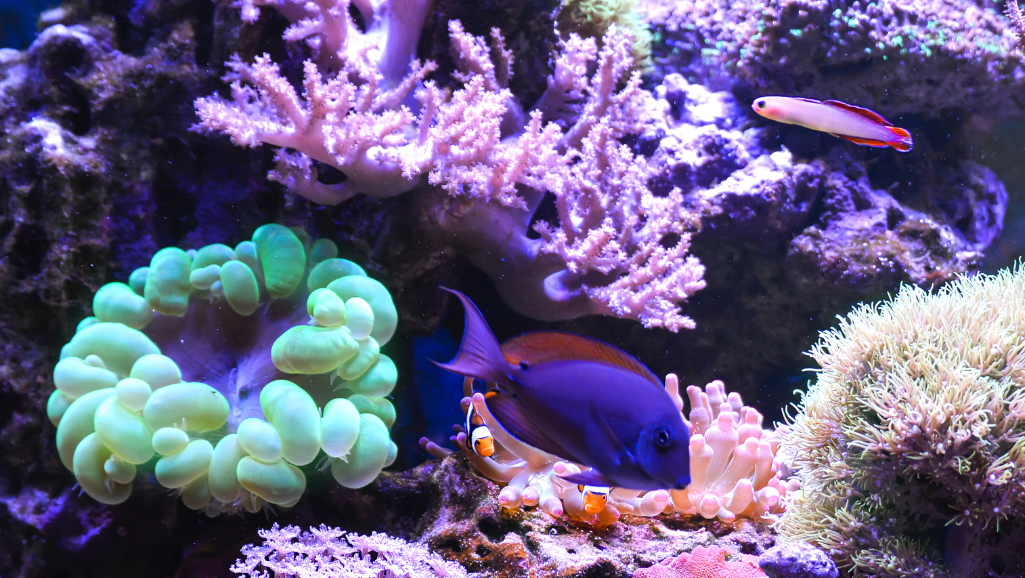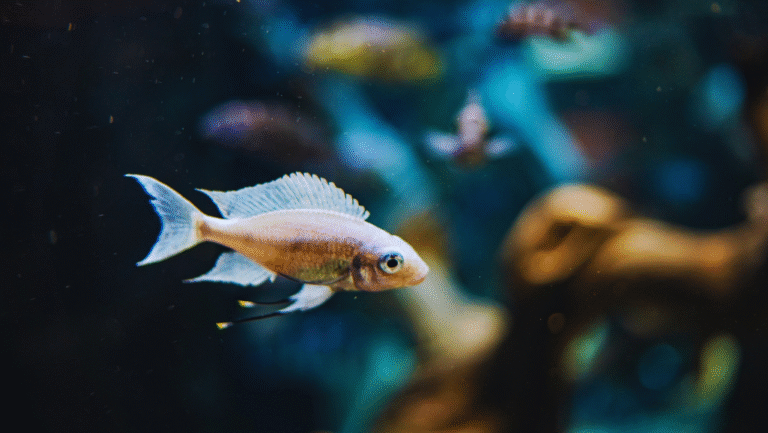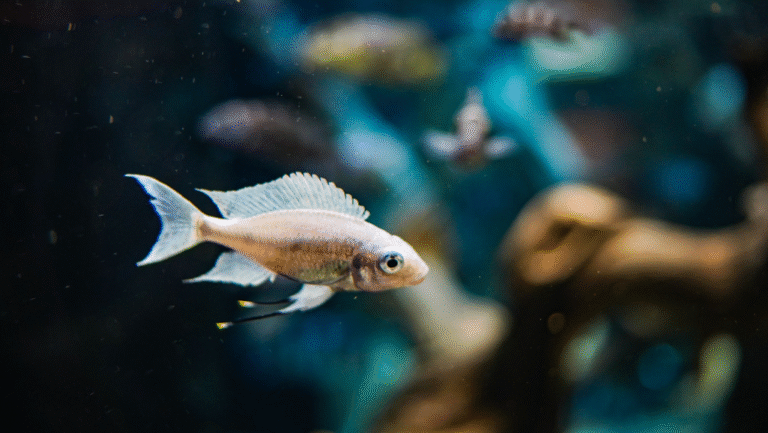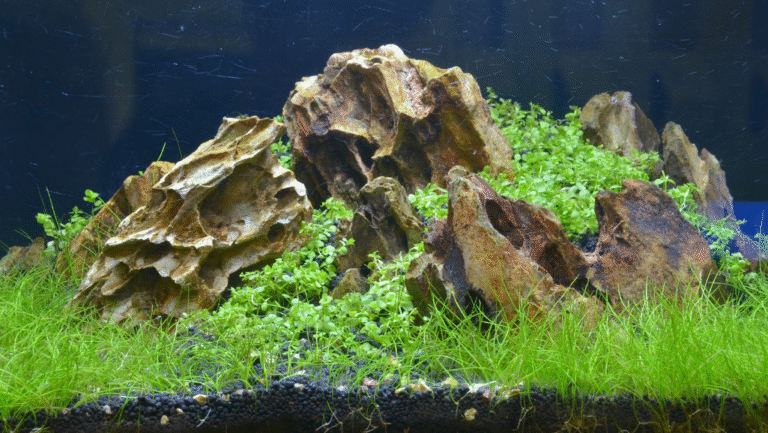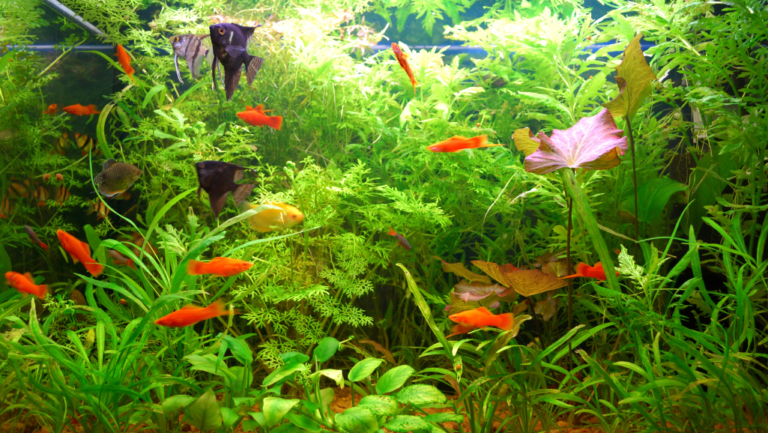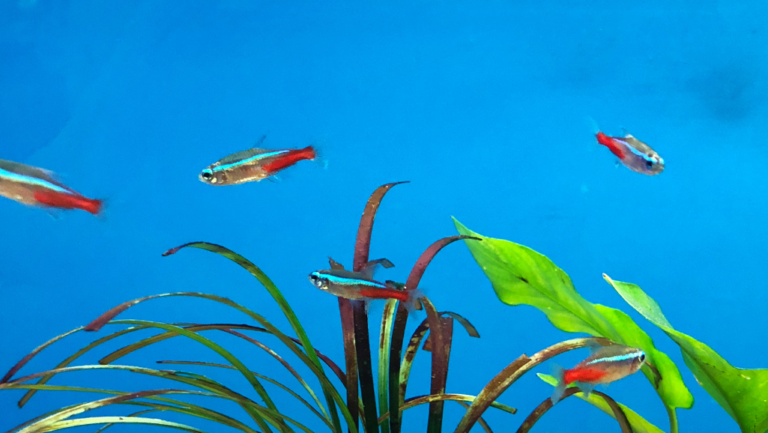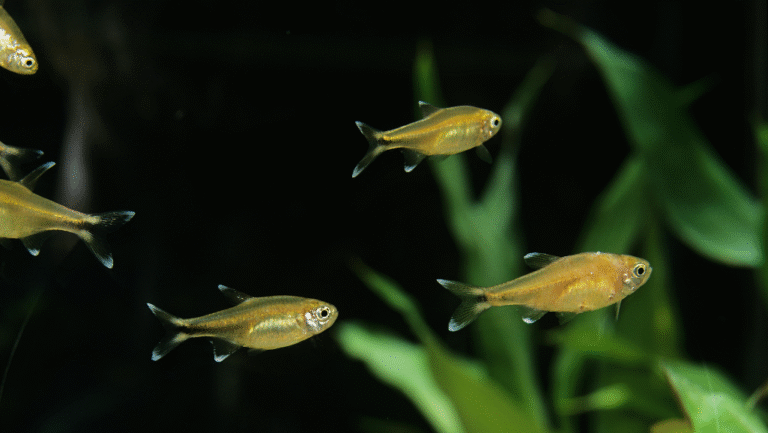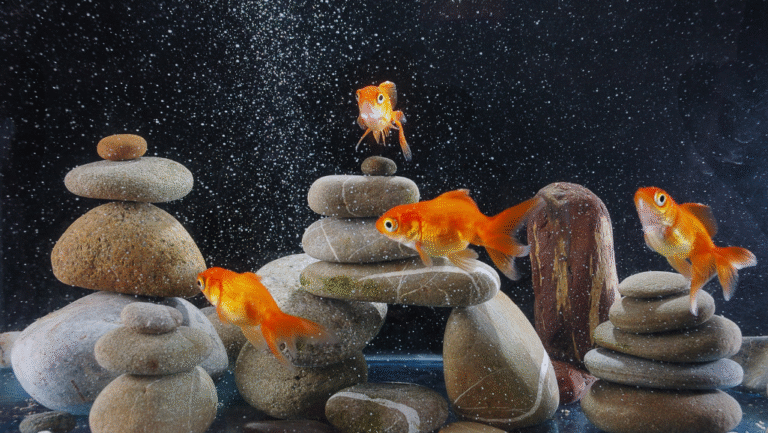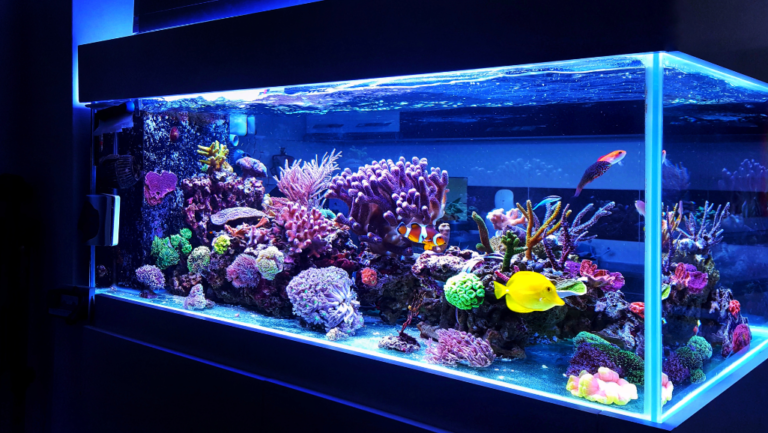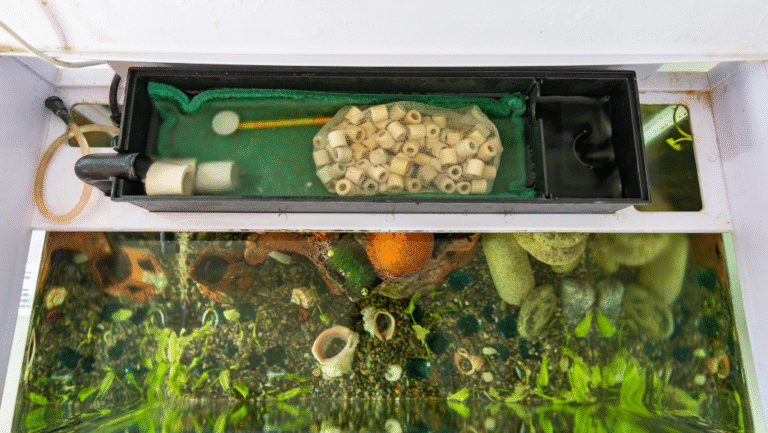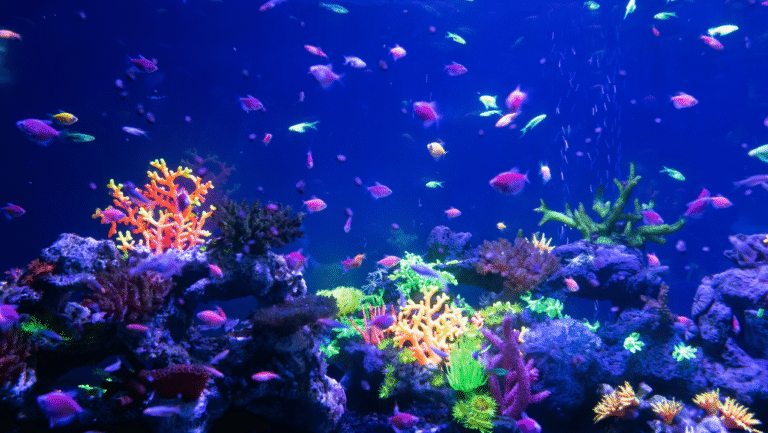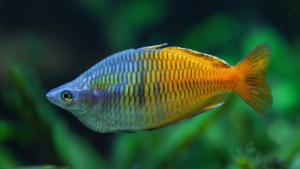Starting a saltwater aquarium cycle is more than a hobby. It’s a journey to create a balanced marine ecosystem. This process mirrors the ocean’s complexity, focusing on the nitrogen cycle.
Yuliya, an Environmental Engineering expert, knows the nitrogen cycle well. She sees it as similar to nitrogen in DNA or proteins. Her love for marine life and environmental care shows why a careful cycling process is key. She starts with quality products like the Red Sea Reef Mature Pro Kit, which supports vital bacteria.
Creating a real underwater world in a tank takes patience. This is true for water conditions and bacterial growth. A well-cycled tank shows a healthy aquatic ecosystem.
Key Takeaways:
- Understanding the nitrogen cycle is foundational in achieving a thriving marine ecosystem in a reef tank.
- Product selection, such as the Red Sea Reef Mature Pro Kit, can significantly influence the success of the saltwater aquarium cycle.
- Patience and precise control over environmental conditions are crucial during both the establishing and monitoring stages of the saltwater aquarium cycle.
- Maintaining optimal nitrate levels is critical, with acceptable concentrations varying depending on the reef tank’s inhabitants.
- Regular monitoring of ammonia, nitrite, and nitrate levels is essential to gauge the cycle’s progress and readiness for introducing marine life.
Introducing the Saltwater Aquarium Cycle
The heart of a saltwater aquarium is the nitrogen cycle in saltwater aquariums. It turns harmful waste into safe compounds that help aquatic life thrive. This cycle is key to creating a healthy home for marine life.
Knowing how the cycle works is crucial for a healthy aquarium. The cycle starts with ammonia in fish tanks. This ammonia comes from fish waste and uneaten food. Bacteria then turn it into safer substances, keeping the tank balanced.
Understanding the Basics of Nitrogen Cycle in Saltwater Aquarium
The cycle starts with ammonia turning into nitrite and then nitrate. This is thanks to two types of helpful bacteria. Managing this process is vital for a clean tank. Learn more about it by checking out efficient filtration systems and their role in the cycle.
The Importance of Ammonia in Fish Tank Dynamics
Ammonia is the first step in the cycle but too much is harmful. Keeping ammonia levels in check is essential. Methods like using ammonium chloride help stabilize these levels before adding fish.
Adding live rock or sand boosts bacterial growth, speeding up the cycle. Resources from experts like World Wide Corals can help you set up and manage your tank.
In summary, understanding and keeping the nitrogen cycle in check is vital. It ensures your marine friends stay healthy and makes your aquarium a thriving ecosystem.
Navigating the Stages of the Saltwater Aquarium Cycle
The journey of cycling a marine tank is complex and rewarding. It mirrors the ocean’s cycles. This process needs patience and precision to replicate natural reef conditions in your tank. Let’s dive into this detailed process.
Setting up a saltwater aquarium relies heavily on biological filtration. About 70% of the filtration comes from live rock. This rock is home to bacteria, algae, and microorganisms. They are key to a healthy aquarium.
- Ammonia Cycle: The first step where ammonia turns into nitrites by beneficial bacteria.
- Nitrite Cycle: Then, nitrites are changed into less harmful nitrates.
- Nitrate Cycle: Nitrates are processed in the live rock, turning into nitrogen gas.
- Pre-Algae & Diatoms Stages: These stages see diatoms grow, followed by Cyanobacteria. This changes the tank’s oxygen levels.
- Green/Brown Algae Stage: The last stage before the tank is ready for marine life.
Keeping the tank stable is key during these stages. It usually takes a month to set up the biological filters in a new tank. Temperature, salinity, and light are crucial in this process.
“To mirror the balance of natural reefs in our tanks, we need time, patience, and a love for marine biology. This ensures a smooth and sustainable transition, leading to a thriving environment.”
During cycling, it’s important to avoid disturbances. Don’t turn on lights, make water changes, or use protein skimmers. These actions help the natural cycle progress.
Grasping and managing these cycles leads to a strong and lively marine ecosystem. It naturally cleans pollutants through biological filtration. This creates a safe home for your marine species.
Crucial Role of Beneficial Bacteria in Aquariums
In a thriving saltwater ecosystem, beneficial bacteria in aquarium settings play a key role. They are essential in breaking down waste and making harmful substances safer. Keeping these bacteria healthy is vital for a thriving underwater world.
Nitrifying Bacteria in Saltwater Aquarium: Nature’s Biofilters
Nitrifying bacteria in saltwater aquariums are crucial. They turn ammonia into nitrites and then nitrates. This is important because ammonia and nitrite are very toxic to fish.
These bacteria act as natural filters. They detoxify the water, which is key for keeping marine life alive.
Studies show that methods like trickle filters help bacteria grow. They also make the tank better at removing ammonia.
Ammonia Detoxifier for Fish Tank Health
Keeping ammonia levels low is a big challenge in fish tanks. Using an ammonia detoxifier for fish tank health is a good idea. It’s best during the first cycle or when the tank gets a lot of new fish.
Products like Instant Ocean Bio-Spira quickly reduce ammonia spikes. They introduce strong bacteria to new setups.
- Ammonia at 0 ppm and Nitrite at 0 ppm in a fully cycled tank are tell-tale signs of effective bacterial activity and biofiltration.
- A large water change recommended pre-introduction of fish ensures the reduction of nitrates and secures a healthy start.
Throughout the lifecycle of a saltwater aquarium, continuous attention to the health and function of the beneficial bacteria is crucial for maintaining a balanced and thriving ecosystem.
Executing the Process: Cycling a Marine Tank
Starting a saltwater aquarium is all about the saltwater aquarium cycle process. It’s a careful balance with nature. We focus on growing beneficial bacterial colonies to keep the tank healthy.
To start, we add something that makes ammonia, like raw shrimp. This helps the bacteria grow. We watch the water closely, checking for ammonia, nitrite, and nitrate levels. When ammonia and nitrite go away, and nitrates show up, we know we’re ready for fish.
- Keep the water at about 78°F for the best bacterial growth.
- Don’t change the water too much, as it can mess with the cycle.
- Use testing kits often to see how the cycle is going.
Being patient is key during this time. The whole cycle can take four to six weeks. How long it takes depends on things like the tank’s setup and the presence of live bacteria.
When it’s time to add fish, do it slowly. Adding them one at a time helps the bacteria adjust. This keeps the marine tank biological balance in check.
Remember, every marine tank is as unique as its creator, and the joy comes from watching a miniature ocean find its harmony right in your living room.
Transitional Phase: Introducing Marine Life to the Balanced Ecosystem
Starting a balanced marine ecosystem in your saltwater aquarium is exciting but challenging. Keeping water parameters right and adding marine life slowly helps avoid nitrite spikes in aquarium.
It’s important to know that even a well-cycled tank can still have ups and downs. Adding marine life should be done slowly. This helps keep them healthy.
Dealing with Nitrite Spikes in Aquarium During Introduction
Nitrite spikes are a big risk when first adding fish to a cycled tank. These spikes happen when there aren’t enough good bacteria to handle the extra load. To prevent this, check nitrite levels often, start with hardy fish, and use products to grow good bacteria. Learn more about keeping your ecosystem balanced to handle these critical moments.
Monitoring and Adjusting for Thriving Inhabitants
Watching your tank closely is key when you introduce fish to cycled tank environments. Test ammonia, nitrite, and nitrate levels, along with pH and salinity, often. This keeps your tank healthy. You might need to make changes a lot at first, but less as the tank settles.
Also, stick to a strict feeding schedule and clean up any leftover food well. This keeps water quality high and prevents nutrient spikes. This care helps your fish stay healthy and makes your aquarium beautiful.
Drip acclimation is a good idea, lasting 1 to 2 hours with a slow drip rate. It helps new fish adjust without stress. For more tips on keeping your aquatic ecosystem healthy during these changes, check out detailed cycle strategies and their effects.
Saltwater Aquarium Cycle Essentials for a Thriving Marine Habitat
Creating a thriving marine habitat means focusing on the crucial saltwater cycle steps. It’s all about keeping the water quality high and the temperature stable. This helps keep the reef tank stability in check. It’s about finding the right balance in lighting, water movement, and filtration.
For beginners, starting with live rock and a good sand bed is key. Choosing between a bare bottom or a live sand bottom affects your tank’s health and maintenance. A sand bed that’s half an inch to eight inches deep helps manage waste and keeps the tank clean.
- Starting with a 75-gallon tank is recommended for a stable environment.
- A reef computer, though expensive, helps keep the environment stable by monitoring it.
- Live rock can bring risks like Mantis shrimp, so it’s important to inspect it carefully and be prepared.
The cycling of a reef tank is vital for setting up beneficial bacteria. It takes 4-6 weeks to convert harmful substances into safe ones. Regular checks on pH, salinity, and other important factors are key to a successful cycle.
Setting up and caring for a saltwater aquarium is more than just a hobby. It’s about creating a home for marine life to thrive. It requires careful attention and a deep understanding of the saltwater cycle. By doing this, hobbyists not only keep their tanks healthy and beautiful but also help preserve the wonders of underwater life.
Conclusion
Starting a saltwater aquarium is a journey of learning and care. It involves choosing the right method for the nitrogen cycle and ongoing maintenance. Each step is key to keeping the marine ecosystem in balance.
There are different ways to set up your tank, from using fish to cycling with chemicals. Introducing ammonia, with levels of 1-2 ppm, starts the cycle of life in your tank.
Understanding the nitrogen cycle takes time, from 4 to 8 weeks. You need to watch the levels of ammonia and nitrite closely. When these disappear, nitrates show up, signaling a healthy tank.
After the cycle, keeping your tank balanced is crucial. Avoid overstocking and change water regularly to keep nitrate levels right. This ensures your tank stays stable.
Products like Fritz TurboStart can quickly add life to your tank. But, using fish food or old substrates can also work. The goal is to create a vibrant, thriving reef, just like the ocean.
Your aquarium’s story is told in the beauty of its fish and the unseen life in the water. It’s a mix of art and science, creating a living masterpiece that captures the essence of the sea.
